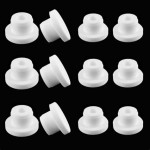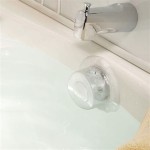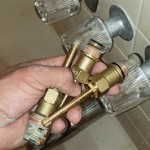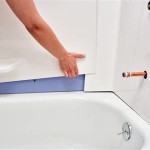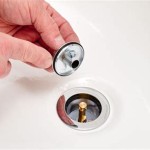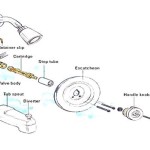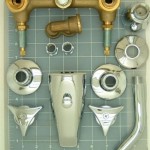How To Clean Grime From Bathtub
Bathtub grime, a stubborn accumulation of soap scum, mineral deposits, body oils, and hair, can transform a sparkling sanctuary into an unsightly and unhygienic space. Regular cleaning is crucial to prevent this buildup and maintain the integrity and appearance of the tub. The longer grime is left to accumulate, the more difficult it becomes to remove, necessitating more aggressive cleaning methods and potentially causing damage to the tub's surface. This article provides a comprehensive guide to effectively cleaning grime from bathtubs, outlining various methods, tools, and preventative measures that can be adopted.
Selecting the appropriate cleaning method begins with understanding the type of bathtub material. Acrylic, porcelain, fiberglass, and cast iron bathtubs each require different approaches to avoid scratching, etching, or otherwise damaging the finish. Abrasive cleaners, for example, while effective at removing tough grime, can cause permanent damage to softer materials like acrylic and fiberglass. Always test any cleaning solution in an inconspicuous area before applying it to the entire bathtub surface.
Furthermore, consider the severity of the grime buildup. Light grime may be easily removed with gentler cleaning agents and less aggressive scrubbing, while heavy, long-standing grime will require stronger solutions and more intensive effort. It is also essential to address the underlying causes of grime buildup. This includes improving ventilation in the bathroom to reduce humidity, rinsing the bathtub after each use to remove soap residue, and regularly cleaning the drain to prevent hair and debris from accumulating.
Understanding the Composition of Bathtub Grime
Bathtub grime is not a singular substance, but rather a complex mixture of various components. The primary constituent is soap scum, a residue formed when soap reacts with hard water minerals like calcium and magnesium. This reaction produces an insoluble precipitate that adheres to the bathtub surface. The type of soap used also influences the composition of soap scum. Traditional bar soaps, which contain fatty acids, tend to produce more soap scum than liquid soaps, which are often formulated with synthetic detergents.
Another significant component of bathtub grime is body oils and dead skin cells. These organic materials accumulate on the bathtub surface during bathing and can contribute to a sticky, greasy residue. Over time, these oils can oxidize and harden, making them more difficult to remove. The frequency of bathing and the types of bath products used can also influence the amount of body oils that accumulate.
Mineral deposits from hard water further contribute to grime buildup. These deposits, primarily calcium and magnesium, can form a hard, crusty film on the bathtub surface, particularly around faucets and drains. The severity of mineral deposits depends on the water hardness in the area. Homes with hard water may require more frequent and intensive cleaning to prevent mineral buildup.
Finally, hair and other debris that accumulate in the drain can contribute to grime buildup. As this debris decomposes, it can release oils and other substances that adhere to the bathtub surface. Regular drain cleaning is essential to prevent this type of grime buildup.
Effective Cleaning Solutions and Methods
Numerous cleaning solutions and methods can be employed to effectively remove grime from bathtubs. The choice of method depends on the type of bathtub material, the severity of the grime, and personal preferences regarding cleaning products. Several common and effective approaches are detailed below.
Baking Soda and Vinegar: This is a natural and versatile cleaning solution that is effective for removing light to moderate grime. Vinegar, an acidic solution, helps to dissolve soap scum and mineral deposits, while baking soda, a mild abrasive, helps to scrub away grime without scratching the bathtub surface. To use this method, mix baking soda with water to form a paste. Apply the paste to the grimy areas of the bathtub and let it sit for 15-20 minutes. Then, spray vinegar over the paste and scrub with a sponge or brush. The mixture will fizz as the vinegar reacts with the baking soda. Rinse thoroughly with water.
Dish Soap and Vinegar: Combining dish soap with vinegar creates a powerful cleaning solution that can effectively remove stubborn grime. Dish soap helps to break down grease and oils, while vinegar dissolves soap scum and mineral deposits. To use this method, heat vinegar in a microwave until warm (but not boiling). Mix the warm vinegar with an equal amount of dish soap in a spray bottle. Spray the solution onto the grimy areas of the bathtub and let it sit for 30 minutes. Then, scrub with a sponge or brush and rinse thoroughly with water. The dish soap and vinegar combination is particularly effective for removing greasy grime and soap scum buildup.
Hydrogen Peroxide and Baking Soda: This combination is a powerful stain remover and disinfectant, effective for removing mold, mildew, and stubborn grime. To use this method, mix hydrogen peroxide with baking soda to form a paste. Apply the paste to the grimy areas of the bathtub and let it sit for at least 30 minutes, or even overnight for heavily soiled areas. Scrub with a sponge or brush and rinse thoroughly with water. This method is particularly effective for removing stains and disinfecting the bathtub surface.
Commercial Bathtub Cleaners: Numerous commercial bathtub cleaners are available, ranging from gentle everyday cleaners to powerful grime removers. When selecting a commercial cleaner, it is essential to consider the type of bathtub material and the severity of the grime. Always read and follow the manufacturer's instructions carefully. Many commercial cleaners contain harsh chemicals that can be irritating to the skin and respiratory system, so it is important to wear gloves and ensure adequate ventilation when using these products. Choose non-abrasive cleaners specifically designed for the bathtub material to avoid damage.
Magic Erasers: Magic erasers, made of melamine foam, are effective for removing grime from various surfaces, including bathtubs. They work by physically lifting grime from the surface through a micro-abrasive action. To use a magic eraser, simply wet it with water and scrub the grimy areas of the bathtub. Be careful not to apply too much pressure, as excessive scrubbing can damage the bathtub surface. Magic erasers are particularly effective for removing stubborn stains and soap scum.
Tools and Techniques for Effective Scrubbing
The effectiveness of any cleaning solution depends on the tools and techniques used for scrubbing. Selecting the right tools and employing proper scrubbing techniques can significantly enhance the cleaning process and minimize the risk of damage to the bathtub surface.
Sponges: Different types of sponges are available, each with varying degrees of abrasiveness. For delicate bathtub surfaces like acrylic and fiberglass, soft sponges are recommended to avoid scratching. For more durable surfaces like porcelain and cast iron, slightly more abrasive sponges can be used. Always test the sponge in an inconspicuous area before using it on the entire bathtub surface.
Brushes: Brushes with soft bristles are effective for cleaning grout lines and other hard-to-reach areas. Stiffer brushes can be used for more durable surfaces, but should be used with caution to avoid scratching. A toothbrush can be used to clean tight corners and around faucets.
Scrubbing Techniques: When scrubbing, use firm, even pressure and work in a circular motion. Avoid applying excessive pressure, as this can damage the bathtub surface. For stubborn grime, allow the cleaning solution to sit for a longer period of time before scrubbing. Rinse the sponge or brush frequently to remove grime and prevent it from being redeposited onto the bathtub surface.
Steam Cleaners: Steam cleaners can be used to loosen grime and kill bacteria without the need for harsh chemicals. The high-temperature steam penetrates the grime, making it easier to wipe away. When using a steam cleaner, be sure to follow the manufacturer's instructions carefully and avoid directing the steam at sensitive areas, such as caulking or grout, for extended periods of time.
Protective Gear: It is essential to wear gloves when cleaning the bathtub to protect the skin from harsh chemicals and bacteria. A mask can also be worn to avoid inhaling fumes from cleaning products. Ensure the bathroom is well-ventilated to reduce the risk of respiratory irritation.
By understanding the composition of bathtub grime, selecting appropriate cleaning solutions and methods, and employing effective scrubbing techniques, it is possible to effectively clean grime from bathtubs and maintain a clean and hygienic bathing environment.

Eliminate Bathtub Stains In Less Than A Day Maryland Tub Tile

How To Clean Tough Stains From A Bathtub 4 Easy Methods

How To Clean A Dirty Bathtub At Home With Ashley

Learn How To Remove Bathtub Stains Rooterman

How To Clean A Dirty Tub Quickly

How To Deep Clean A Bath Cleaning Tips The Home Depot

My Dirty Little Secret For A Sparkling Clean Bathtub

Clean With Me Removing Rust Stains From A Bathtub And Marble Best Cleaning Ever

A Clever For Cleaning Your Faucet Head

How To Remove Stains From Bathtub Save Time Money

